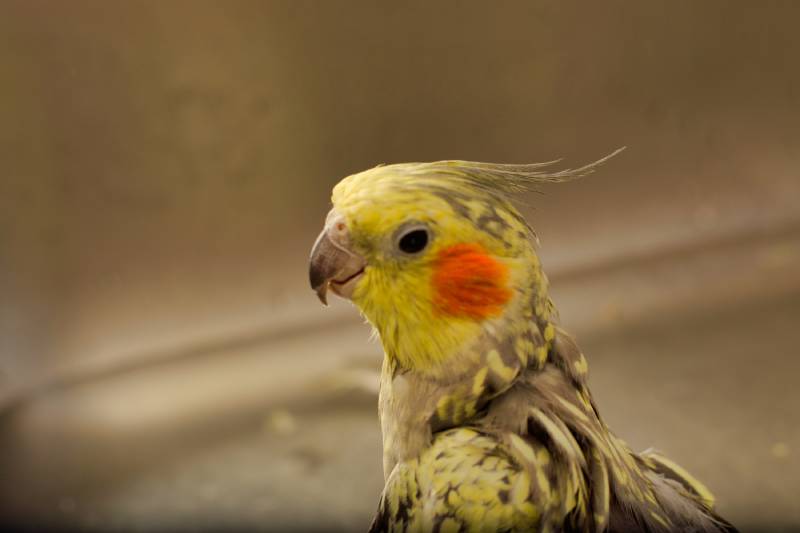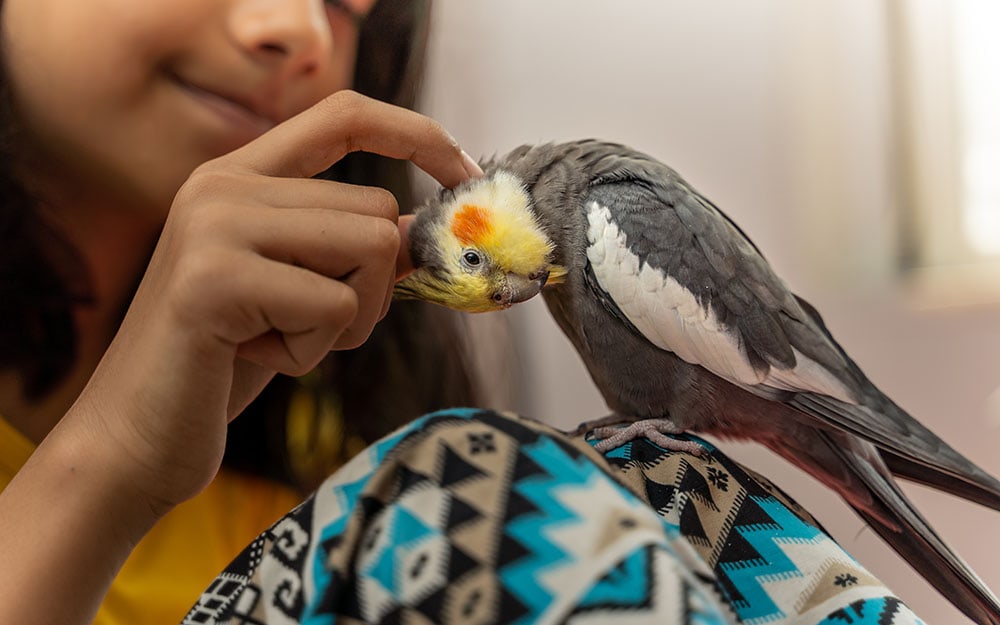How to Bathe a Cockatiel: 5 Easy to Follow Tips
Updated on

Wild cockatiels find creative ways to bathe themselves. Some use puddles on the street, some seek out bird baths in backyards, and some wait patiently until mother nature provides a good rainfall to take a good bath.
Companion cockatiels don’t have access to puddles, backyard bird baths, or rainfall, so they rely on you to provide them with what they need to bathe.
Read on to learn everything you need to know about a cockatiel’s bathing regimen, including tips on how to help yours get clean.
Why Do Birds Need Baths, Anyway?
Domesticated birds don’t get particularly dirty when they spend all day inside, so why do they need to bathe in the first place?
Regular baths are essential for feather maintenance and skin hydration. They can help keep feathers dirt-free and encourage them to groom themselves. In addition, the dry air inside our homes is not conducive to maintaining healthy feathers or skin. So, while your indoor-only cockatiel is unlikely to come into contact with mud or dirt, having regular baths is still important.

How Often Do Birds Need to Bath?
You should offer your cockatiel a bath daily. The keyword here is offer. It’s unlikely that your bird will bathe daily, but they must have the option to. Some cockatiels will happily splash away in the bath daily, while others will prefer to wash occasionally.
If you’re new to bird ownership, start by offering your cockatiel a bath once or twice every week. You may need to experiment with the time of day you’re offering the bath, as some birds prefer to bathe in the morning and others in the afternoon.
Tips for Bathing a Cockatiel
1. Try Different Bathing Techniques
Most cockatiels will do the work of bathing themselves, provided they’re given water and a receptacle of some kind to do their bathing.
Some birds prefer to use a water dish or a bird bath, while others enjoy being in the shower with their humans. You can find shower perches for birds online that your pet can use to perch upon in your shower. If you go this route, ensure your shower head isn’t pointed directly at your cockatiel, as the water pressure can hurt or frighten it.
Some bird owners find a shallow sink of water works well as a bathtub. This is especially suitable for those birds that like to frolic under a trickling water tap.
If your cockatiel doesn’t like any of these bathing techniques, you might have luck using a plant mister to mist it gently. Of course, not all birds like to be misted, but those that do love it as it feels a lot like the rain they’d be exposed to in the wild.

2. Use the Right Water Temperature
Your cockatiel’s bathwater should feel pleasant and lukewarm. Most birds prefer a room-temperature bath, but your bird will let you know if it’s too hot or cold by refusing to get into the water at all.
3. Provide Heat Post-Bath
Your cockatiel can get a chill after its bath if it’s soaking wet in a cool room. Ensure its room is warm enough to expedite the drying process so your bird isn’t sitting wet for too long.
Unless the weather is warm and not windy, keep the windows in your bird’s room closed to prevent any drafts.
Never use a blow dryer to dry your bird after its bath. Not only can this cause burns, but some dryers have a non-stick coating that’s actually extremely toxic for birds.

4. Know Your Water Type
If your city uses chlorinated water, use bottled water for bathing your bird instead of the water from the tap. While it is unlikely that small amounts of chlorinated water will harm your pet, it’s best to err on the side of caution. Chlorine in excess amounts can be toxic.
5. Steer Clear of Soaps
Do not use soaps or cleaning supplies of any kind when bathing your cockatiel. Things like shampoos and soaps can remove your bird’s powder, resulting in unhealthy plumage. Not to mention, birds preen their feathers after their baths, so anything you use on them could potentially get ingested. Water is all you need.

Final Thoughts
Baths for birds are just as essential as they are for humans. Your cockatiel should be offered a bath daily; whether it takes one every day is entirely up to it. You may need to try several different bathing techniques to find one that your cockatiel enjoys, but once it figures out its favorite way to get clean, it’s likely to fall in love with the process.
Featured Image Credit: Weiner Family Studios, Shutterstock











